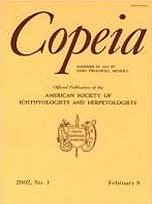Riverine fishes may benefit from moving onto inundated floodplains and directly exploiting floodplain resources. Studies of floodplain ecology for smaller streams have focused primarily on how fishes benefit indirectly from flooding (e.g., cycling of allochthonous nutrients). In a second order, blackwater stream in southern Mississippi, more food was available for cherryfin shiners (Lythrurus roseipinnis) on an inundated floodplain than was available in the low water stream. The floodplain drift of prey items consisted of significantly higher densities of terrestrial arthropods (Collembola, terrestrial Acariformes) and aquatic organisms associated with floodplain pools (Oligochaeta, larval Chironomidae, Anomopoda). While on the floodplain, L. roseipinnis ate significantly more food and consumed a significantly different diet than did L. roseipinnis in the stream. The difference in diets between the two habitats was because of the predominance of a terrestrial arthropod (Collembola) in the diet of L. roseipinnis on the floodplain. These results demonstrate that fishes in small streams can directly exploit floodplain food resources of briefly inundated floodplains. If stream-floodplain connectivity is eliminated in small streams through anthropogenic activities (e.g., channelization, riparian destruction), then L. roseipinnis and other small stream fishes will have limited access to invertebrate food resources.
How to translate text using browser tools
1 September 2003
Direct Exploitation of Prey on an Inundated Floodplain by Cherryfin Shiners (Lythrurus roseipinnis) in a Low Order, Blackwater Stream
Martin T. O'Connell
ACCESS THE FULL ARTICLE

Copeia
Vol. 2003 • No. 3
September 2003
Vol. 2003 • No. 3
September 2003




